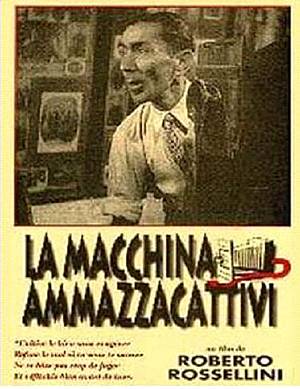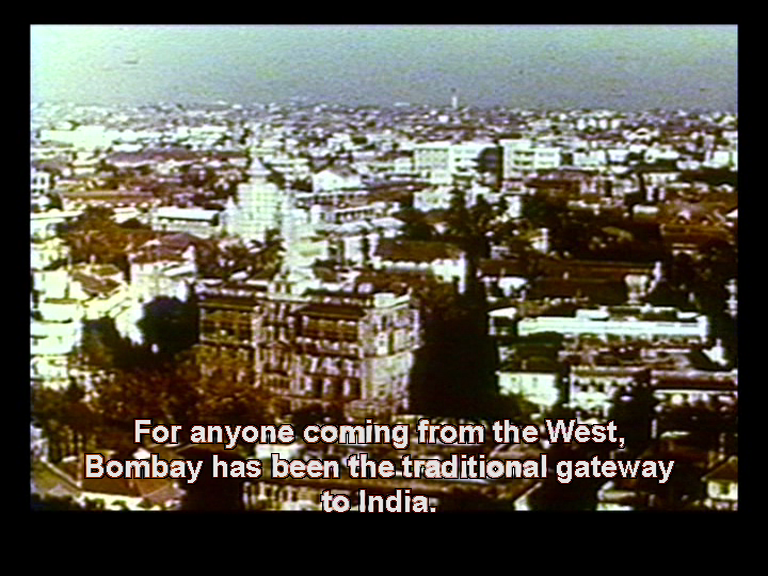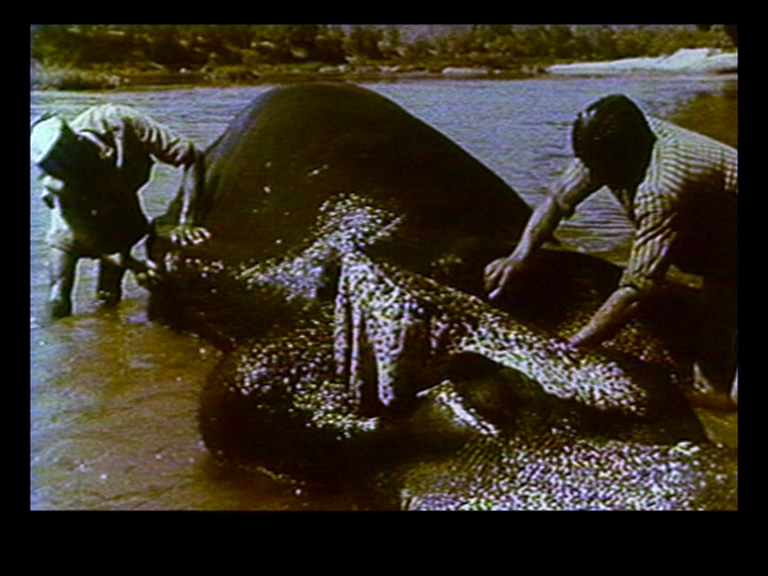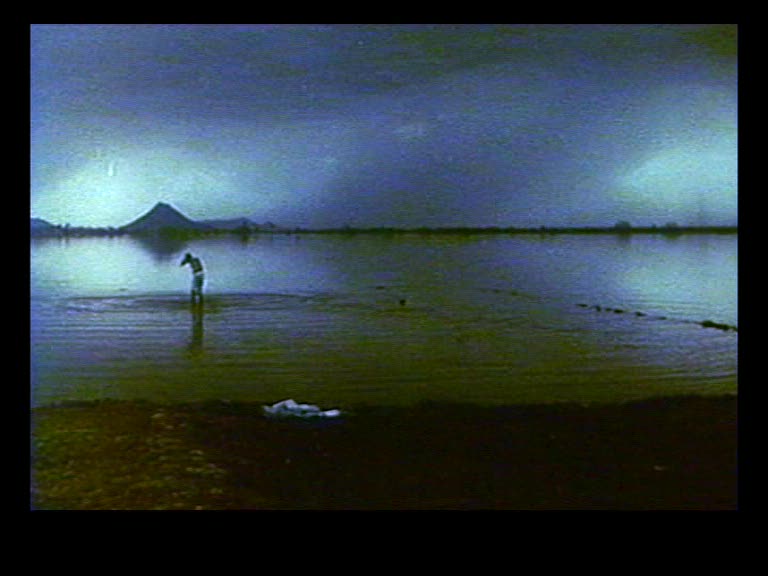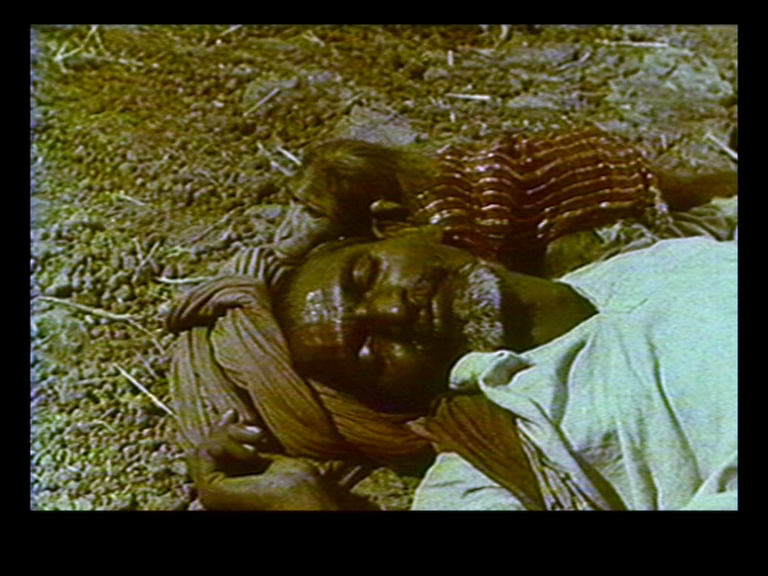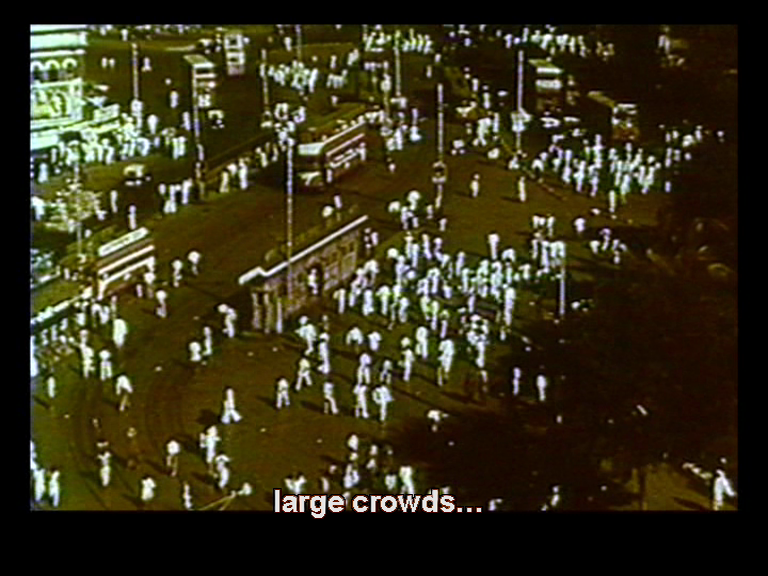From the Chicago Reader (August 31, 2007). — J.R.
INDIA MATRI BHUMI ****
DIRECTED BY ROBERTO ROSSELLINI
WRITTEN BY ROSSELLINI, SONALI SENROY DAS GUPTA, FEREYDOUN HOVEYDA, AND JEAN L’HOTE
WITH A NONPROFESSIONAL, UNCREDITED CAST
From the beginning film has owed part of its fascination to its ambiguous marriage of documentary and fiction. Just after the war Roberto Rossellini came to prominence as a filmmaker through combinations of this kind. His best-known early works, Open City (1945) and Paisan (1946), are associated with the style popularly known as Italian neorealism, but through the 50s Rossellini experimented with increasingly adventurous mixes of reality and invention, culminating in 1959 with India Matri Bhumi, whose title means “India, Mother Earth.” It’s a sublime symbiosis of fable and nonfiction that poetically inter-relates humans and animals, city and village, society and nature.
At war’s end Rossellini was primarily concerned with the human devastation in Italy and Germany. But once he began working with Ingrid Bergman, with whom he was living after their affair busted up both their marriages, domestic issues started coming to the fore, particularly in such features as Europa 51, Voyage to Italy, and Fear. The Bergman films flopped both critically and commercially, though for the young critics of Cahiers du Cinema they were models of personal independent filmmaking that would help spark the French New Wave. Rossellini’s other bold forays during this period include a feature about Saint Francis of Assisi, a comic fantasy called The Machine That Killed Bad People (about a still camera that turns its subjects into statues), and a direct-sound recording of a play starring Bergman, made at a time when all films in Italy were dubbed.
From this standpoint, India can be regarded as the pinnacle of Rossellini’s richest period, his crowning masterpiece. Jean-Luc Godard once referred to it as “the creation of the world,” and unlike many other films about India made by Westerners — Jean Renoir’s The River (1951) is prototypical — it can’t be accused of either presumption or pretension. It’s remained one of the hardest to see of Rossellini’s major works, in part because of the complex and chaotic conditions under which it was made and initially received. Then 51, Rossellini became romantically involved with his main script collaborator, 27-year-old Sonali Senroy Das Gupta, a traditional Brahmin who was married with two small children and, ironically, went to work for Rossellini only at her husband’s insistence. The ensuing scandal forced her and Rossellini to leave the country before the film was finished. (It was completed in French and Italian studios.) Its French producers were so dissatisfied with it after its Cannes premiere that they refused to give it a commercial release, and the Italian reception was lukewarm at best.
Lamentably, the only print to have circulated with English subtitles is the badly faded and dubious 1987 restoration of the Italian version, which is missing almost ten minutes, including most of the final sequence. By common consensus, the French Cinematheque’s only slightly faded 1994 restoration of the French version — which survives in only one print, without subtitles — is the closest thing we have to a definitive edition. It’s never been available commercially, on film or video, and it’s doubtful it ever will be. But now that it’s been privately subtitled in English and on video by Rossellini biographer Tag Gallagher, it can finally be seen by a wider audience. (The Chicago Cinema Forum is screening it twice this weekend.)
India, like Paisan, is divided into separate stories with different characters and settings, but with a strictly documentary prologue and epilogue. Originally it was supposed to have nine episodes, but five were eventually discarded. (It was also originally meant to be called India 57 — dating it by year, like Europa 51 and Germany Year Zero [1947] — but the number was dropped after its release was delayed.) Like most of Rossellini’s greatest work, it conforms to what Godard once called “the definitive by chance.” It has the spontaneous, unpredictable feel of a jazz improvisation while remaining so simply and lucidly focused it’s difficult to imagine it any other way.
The four stories not only move between nonfiction and fiction, but develop more broadly from youth to middle age to old age to death while charting interactions between humans and nature. In all but the second episode nature is represented by animals: elephants in the first, a tiger in the third, a monkey in the fourth. In the second, it’s represented by a man-made lake: a laborer is preparing to leave Hirakud with his wife and young son after five years of helping to build an enormous dam with a crew of 35,000 workers.
Deceptively, the documentary prologue is conventional to a fault: scenic pans across cityscapes, a standard voice-of-God male narrator intoning, “For anyone coming from the West, Bombay has been the traditional gateway to India.” We’re told about endless quantities of people, ethnic and linguistic mixes, as the pans continue across pedestrians. The tone briefly turns more personal when the ugliness of some of the architecture is briefly noted; then the narration and editing converge in a virtual parody of a conventional travelogue. We hear countless synonyms for “carrying” over a montage of people transporting assorted objects, followed by a long string of different verbs as the action in the montage changes.
Eventually we see an elephant and the exposition becomes specific: “The elephant has been brought to the city for a religious ceremony. It comes from the immense jungle Karapur, where it works, lived wild, was captured and trained. The elephant is the bulldozer of India.” The next thing we know, we’re in the jungle, and gradually introduced to a procession of elephants guided by men who clear away trees. We learn that the elephants can only work three hours a day, from seven to ten in the morning, after which it becomes too hot. The rest of the day is spent tending to them. This leads to a sequence of elephants being bathed and scrubbed in a river that’s one of the most hypnotic, magical, and beautiful sequences in all of cinema, illustrating a kind of utopian interaction and harmony between men and animals. By this time it’s become apparent that the narrator is one of the bathers, and for the remainder of this story he recounts courting a peddler’s daughter, told in counterpoint with an account of the mating habits of the elephants.
There’s an assertion I’ve only ever heard secondhand, attributed to French critic Alan Bergala in his critique of the French version, that India is the first film to incorporate morphing, specifically the transitional portions of the narration between the separate episodes. Real morphing — the seamless digital transformation of one image into another — was first used extensively in Willow, released in 1988. But I assume Bergala meant morphing as a concept and structure — when one narrator or character imperceptibly merges into another and documentary morphs into fiction. It’s a narrative method with metaphysical and spiritual connotations, relating to reincarnation, transubstantiation (in Rossellini’s own Catholic context), and metamorphosis, summed up by the laborer/narrator of the second episode when he passes a corpse burning on a funeral pyre and reflects, “Maybe it’s beautiful to dissolve into nature.” This episode is as melancholic as the first is jubilant, mainly due to the sorrow and anger of the laborer’s wife about leaving their home again five years after being ousted from East Bengal because of the partition with Pakistan.
The third episode is narrated by an 80-year-old man, happily married, who spends his days communing with his cows and the animals in the jungle near his home. His contemplative life is disturbed one day by the sounds of trucks prospecting for iron, causing most of the birds and animals to flee. With no other prey, a tiger attacks a porcupine and is wounded in the process. Vulnerable and threatened, the tiger becomes dangerous to men for the first time, and a hunt ensues. But the old man, believing “the world is big enough for everyone,” ultimately carries out a plan of his own.
Like the prologue and epilogue, the fourth episode features third-person narration. An old beggar with a monkey, en route to a fair at Bagdel, collapses and dies from the heat. The monkey finds himself caught between the human and animal worlds, and after warding off the vultures circling the beggar’s corpse, he travels alone to the city, where he continues to perform and collect money out of habit. The monkey’s adventures eventually lead him to a circus, and as a shot of the circus audience morphs into a street crowd, the narration morphs into the recitation of another catalog, this one all-embracing, encompassing sheep, goats, cows, people, and even trees. It ends with a shot of birds that closely resemble the vultures, but like the tiger in the third episode, they’re simply part of the world — no more and no less.


